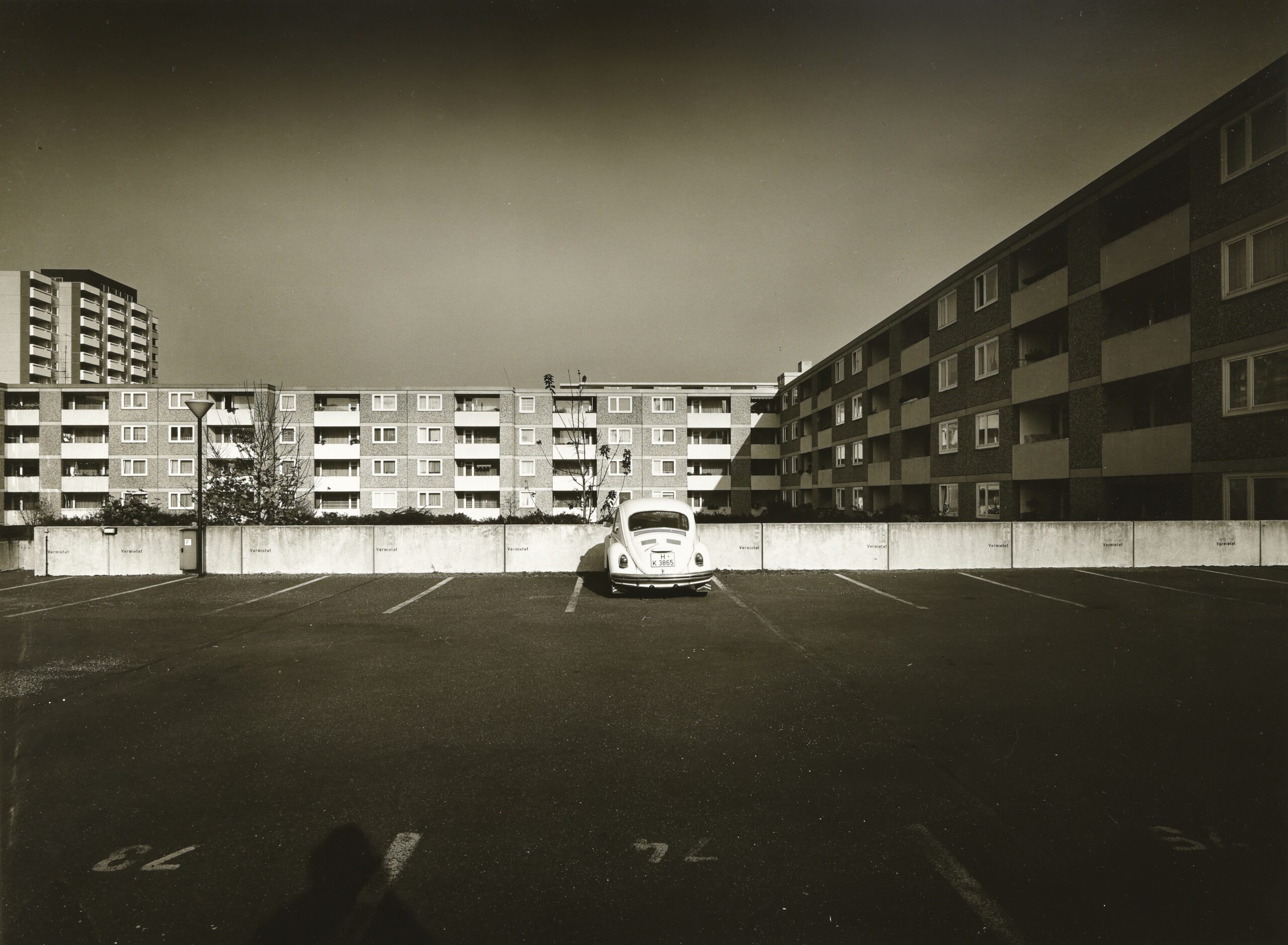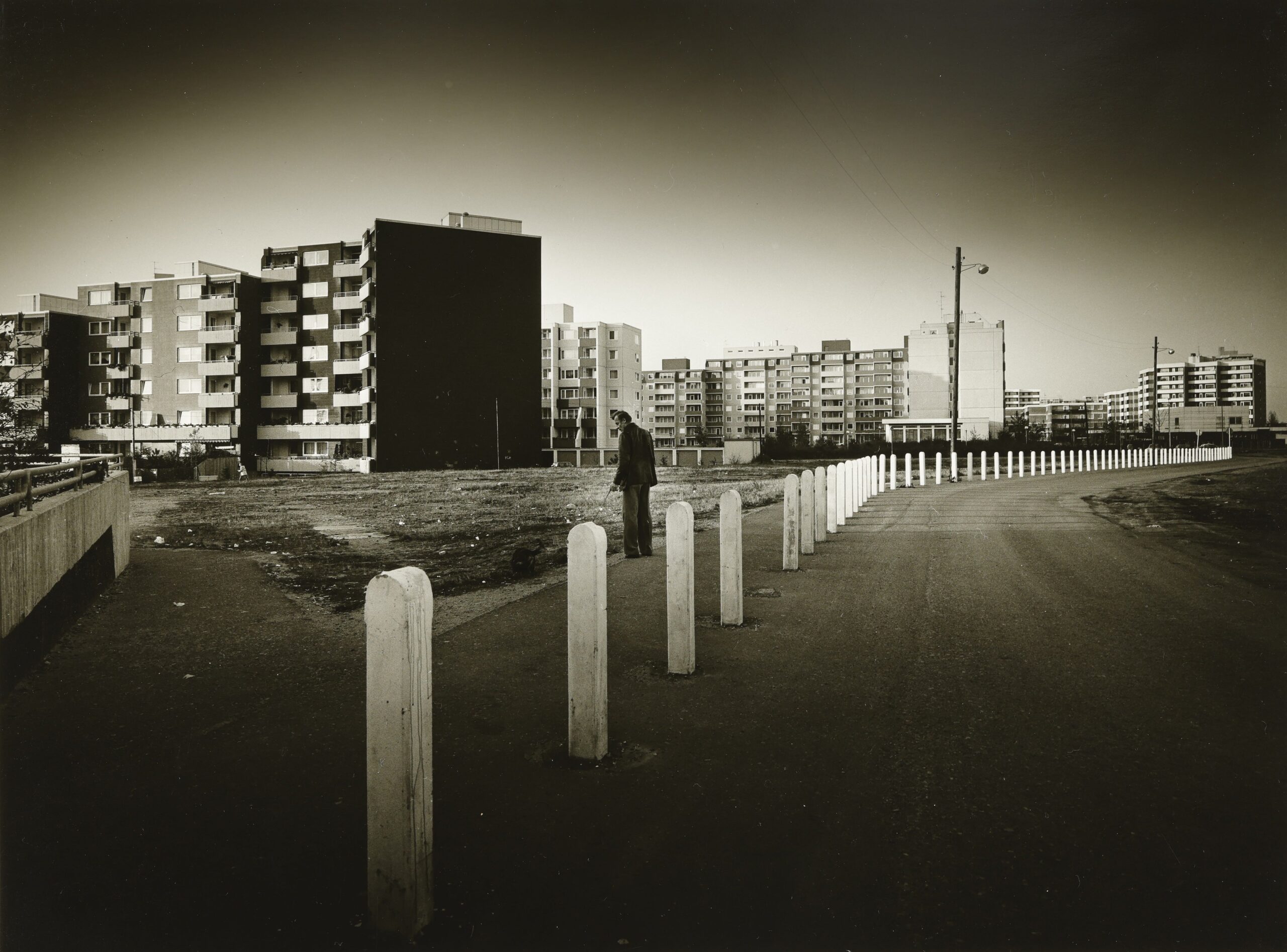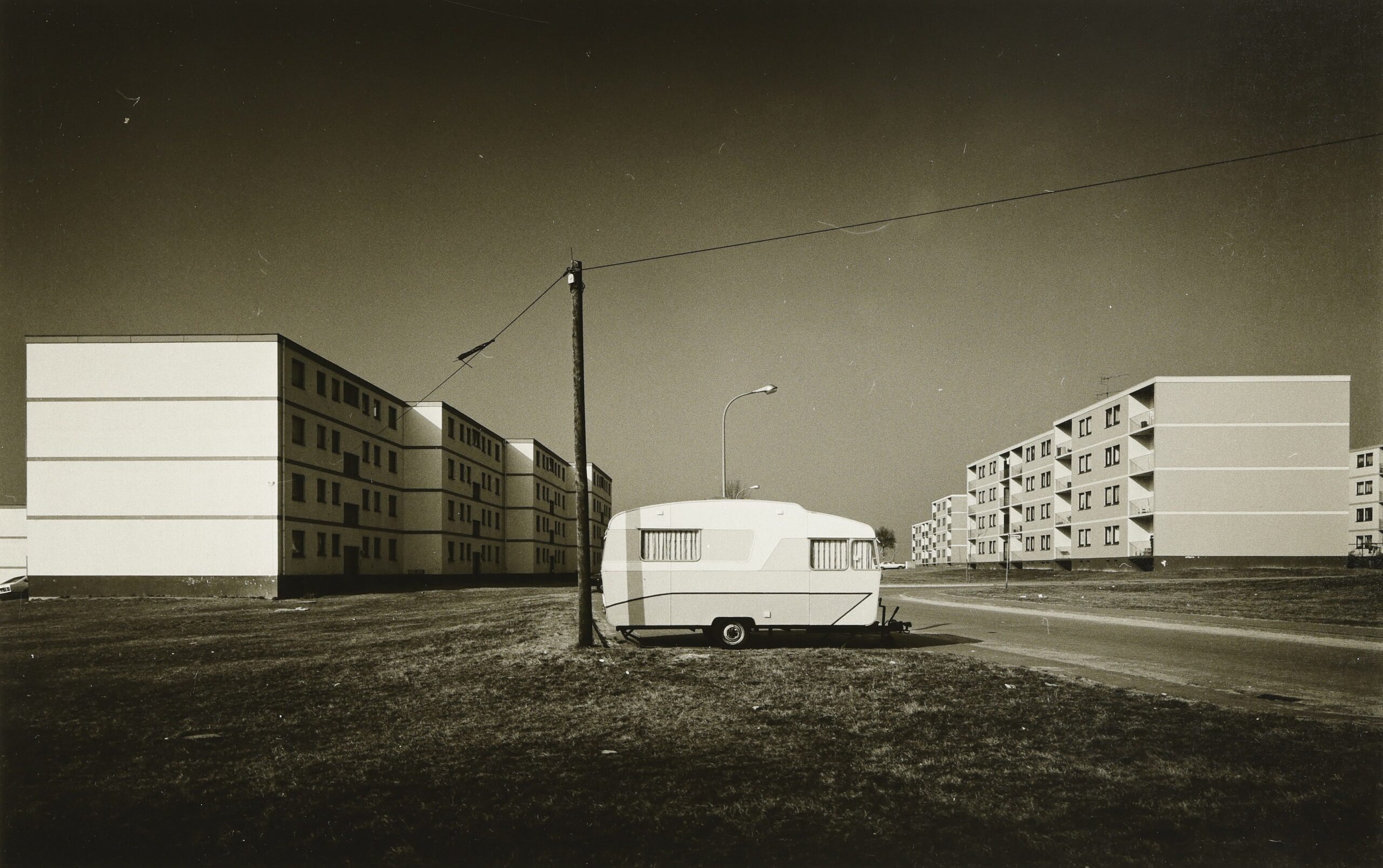Joachim Giesel, Hochhaussiedlung am Canarisweg I. From the series “Vorstädte” (Suburbs), Hanover, 1979-1980.

Joachim Giesel, Hochhaussiedlung am Canarisweg I. From the series “Vorstädte” (Suburbs), Hanover, 1979-1980.

Joachim Giesel, Hochhaussiedlung am Canarisweg I. From the series “Vorstädte” (Suburbs), Hanover, 1979-1980.

Joachim Giesel, VW-Käfer. From the series “Vorstädte” (Suburbs), Hanover, 1979-1980.

Joachim Giesel, Gassi-Gänger. From the series “Vorstädte” (Suburbs), Hanover, 1979-1980.

Joachim Giesel, Einzelner Wohnwagen. From the series “Vorstädte” (Suburbs), Hanover, 1979-1980.

Joachim Giesel, Wohnwagen. From the series “Vorstädte” (Suburbs), Hanover, 1979-1980.

Joachim Giesel, Wohnwagen vor Hausfassade. From the series “Vorstädte” (Suburbs), Hanover, 1979-1980.

Joachim Giesel, Wohnwagen in der Schwarzwaldstraße. From the series “Vorstädte” (Suburbs), Hanover, 1979-1980.

Joachim Giesel, Wohnwagen Reihe. From the series “Vorstädte” (Suburbs), Hanover, 1979-1980.
Joachim Giesel was already an experienced professional photographer with a master’s certificate in the craft of photography when he decided to take his diploma in photography at Dortmund University of Applied Sciences and Arts in 1980. His final thesis is entitled Vorstädte (Suburbs) and comprises 63 black and white photographs, accompanied by a ring binder made of black cardboard paper with his own text and images, in which he explains the idea and approach of his project.
A critical article by architect and urban planner Gerhardt Laage in the weekly newspaper DIE ZEIT inspired Giesel to create his documentary series. This depicts the bleak reality of countless suburban housing estates in West Germany in the 1980s and documents an urban development that shows astonishing parallels to that in the GDR. The first large housing estates were built in West Germany in the 1960s under the maxim “urbanity through density”. However, the initially praised concept of the dense city was quickly criticized: inadequate living conditions, the monotonous concrete buildings and the lack of communication in the residential atmosphere led to growing dissatisfaction. Giesel’s photographs of Laatzen, Wülfel and Bemerode in Hanover, the suburbs of Wolfsburg and Braunschweig as well as Bremen-Vahr illustrate this failure of the densified city. Instead of quality of life and social communication, his thesis paints a picture of anonymity and monotony, reflecting the bleak reality of many residents of large housing estates.
The photographer deliberately shows the residential silos in his series without a single person. In his diploma thesis Vorstädte (Suburbs), he explains: “I deliberately left people out of my pictures so that the eye can focus on the purely structural, the facades. Or on the little evidence of human existence, such as cars, banks, garbage cans or caravans”.
With his work Vorstädte as a photographic commentary on the urban development situation in the Federal Republic of Germany, Giesel reacts to a current social discourse and thus positions himself as a socially critical photographer.
2024 Leipzig, Mädler Art Forum: Menschenbilder | Zeitgeschichte. Der Fotograf Joachim Giesel.